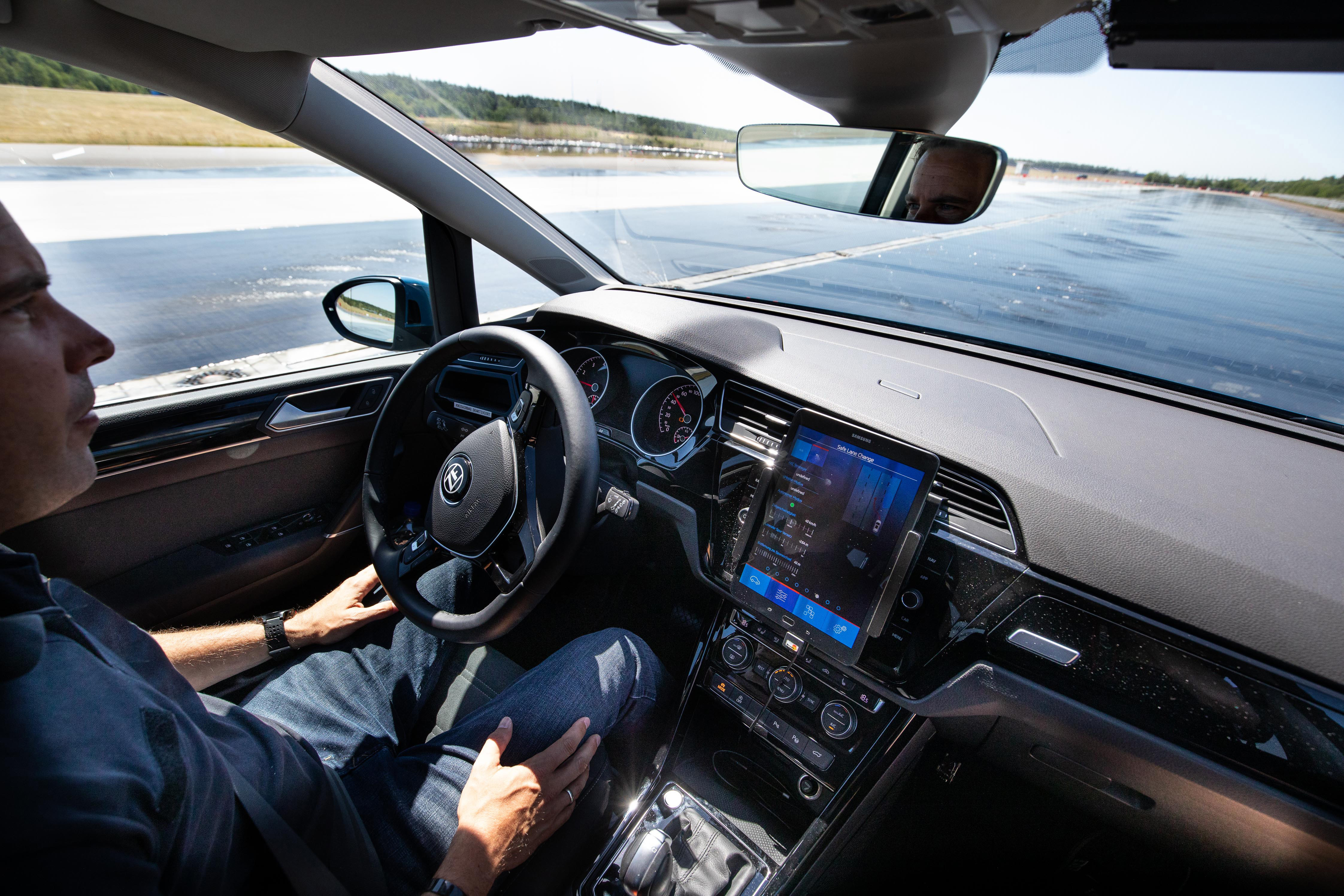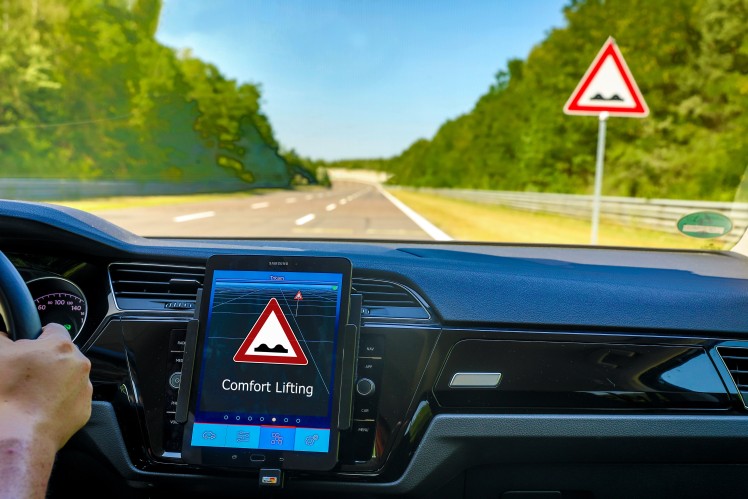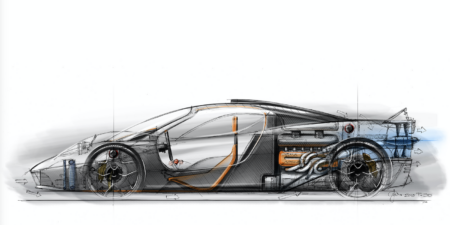ZF has created Flying Carpet 2.0, a predictive chassis concept that brings together the company’s various active and semi-active vehicle motion control systems into one design. As its name would suggest, the chassis design is intended to isolate passengers from unpleasant vehicle movements, partly by using advanced sensors, a smart control unit, and intelligent actuators to predict and respond to bends, bumps and potholes in the road. However, don’t expect to see this integrated system in a car anytime soon: it is designed to lay the groundwork for future automated vehicles.
Passengers in cars today can work, read or watch films, but unwanted car body movements caused by potholes, bumps or bends, or abrupt braking or accelerating, can lead to motion sickness while watching screens rather than the road ahead. This is an inconvenience today, but such activity will be far more central to the autonomous car passenger experience, which is where the Flying Carpet 2.0 concept comes in.
“When developing concepts for fully automated and autonomous driving, the chassis has a key role to play”, explains Dr Christoph Elbers, VP of car chassis technology development at ZF. “With our Flying Carpet 2.0, we have devised a chassis concept that is capable of controlling virtually all longitudinal, transverse and vertical movements of the vehicle.”
At the heart of the design is the sMotion fully active damping system, which uses four actuators to adapt the suspension movements of each individual wheel according to the driving situation and road surface features. The actuators do not just control hydraulic resistance levels to respond to incoming stimuli. Instead, they have a compact, external electric motor and pump unit with integrated electronics that works as a bi-directional actuator. These units can elevate the vehicle wheels upward together or push them downwards, individually and actively.
For example, when cornering, the two inner wheels can be retracted and the outer ones extended so that the passenger car remains virtually horizontal. This system is designed to help counteract the pitching, rolling, and lifting movements that can occur when accelerating, braking, steering, or when driving over bumps in the road.

To improve ride comfort, the concept also includes the AKC active rear axle steering system (Active Kinematics Control) to enhance safety, dynamics and manoeuvrability. At low vehicle speeds, this makes it easier to manoeuvre by steering the rear axle in the opposing direction to the front wheels. If the vehicle is moving faster, the system steers the front and rear wheels in the same direction to provide greater directional stability. When used in conjunction with sMotion, AKC would prevent power oversteer on tight bends. Supplemented by ZF’s steer-by-wire power steering system and active brake system IBC (Integrated Brake Control), the combination of these four integral chassis components can add comfort to most driving situations.
Smart control unit links sensors and actuators
The cubiX control system is the central network for this smart chassis technology, with a feedback control algorithm that links and coordinates the active and semi-active actuators. This scalable system is based on a modular design that enables it to be adapted to suit the requirements of automotive manufacturers.
“We supply all chassis components from a single source: active damping, front and rear axle steering, and brakes. That places us in the unique position of being able to match the control of these components by algorithm in an ideal manner, combining them to form a predictive and responsive system. The system integration and smart, connected mechatronic systems make the vehicle fit for the autonomous urban traffic of the future”, stated Dr Elbers. Optimum networking of the individual actuators results in new functions that can increase comfort as well as improving the dynamics and safety of a vehicle.
The control unit receives the data from a set of sensors on each wheel comprising an accelerometer on the axle above the actuator, and a height sensor. In conjunction with camera systems, a vehicle equipped with Flying Carpet 2.0 could detect irregularities in advance and can also detect obstacles and objects such as road traffic signs, enabling the actuators to prepare for any impending movements.






